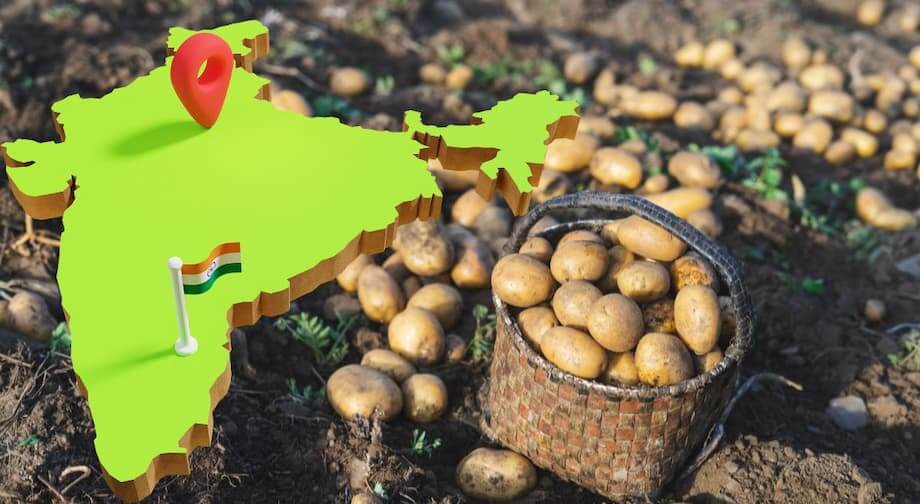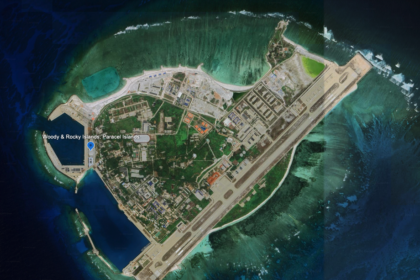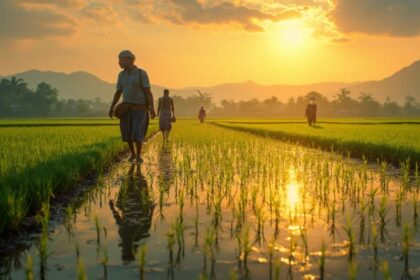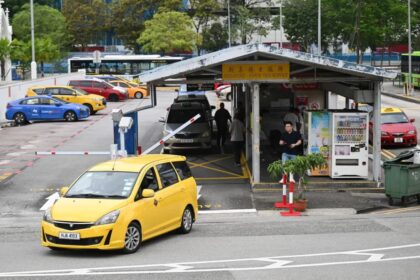India’s French Fry Revolution: From Farmland to Global Plates
Once a niche luxury imported from Europe and the United States, French fries have become a symbol of India’s remarkable transformation in global agriculture and food processing. In just two decades, India has evolved from a net importer to a powerhouse exporter of frozen French fries, reshaping rural economies, global supply chains, and the very nature of the humble potato.
- India’s French Fry Revolution: From Farmland to Global Plates
- From Cotton Fields to Potato Powerhouses: The Farmer’s Journey
- Gujarat: The Heart of India’s French Fry Industry
- India’s Meteoric Rise in the Global French Fry Market
- The Science Behind the Spud: Breeding and Technology
- Building the Supply Chain: Storage, Logistics, and Challenges
- Empowering Farmers and Rural Communities
- The Road Ahead: Opportunities and Global Impact
- In Summary
This article explores how India’s farmers, entrepreneurs, and food companies have turned the country into a leading supplier of French fries to the world, the innovations driving this growth, and the challenges and opportunities that lie ahead.
From Cotton Fields to Potato Powerhouses: The Farmer’s Journey
The story of India’s rise as a French fry exporter begins in the fields of Gujarat, a state in northwest India. Traditionally, families like that of Jitesh Patel grew cotton, but poor returns and recurring droughts in the early 2000s forced a rethink. Seeking crops that required less water, Patel and many others turned to potatoes. Their initial experiments with table potatoes—those sold in local markets—yielded little improvement. The real breakthrough came when food industry giants began setting up French fry processing plants in Gujarat, creating demand for specific potato varieties suited for fries.
By 2007, Patel’s family and others in the region had shifted to growing processing-grade potatoes. These varieties, such as Santana, Innovator, Kufri Frysona, and Lady Rosetta, are bred for high dry matter and low sugar content, making them ideal for crispy, golden fries that meet international standards. The switch was transformative, offering better returns, more stable incomes, and a new sense of security for thousands of farmers.
Contract Farming: A Win-Win Model
Central to this transformation is the contract farming model. Companies like HyFun Foods, McCain Foods, and Iscon Balaji Foods enter into agreements with farmers, guaranteeing pre-agreed prices and providing quality seeds, technical support, and guidance on best practices. This model ensures a reliable supply of high-quality potatoes for processors while giving farmers price stability and access to modern agricultural techniques.
As one industry expert explained, “The contract farming model ensures stable prices and assured procurement for farmers, who receive quality seeds and guidance on best practices. Innovations in planting methods have reduced input costs and improved yields.”
Farmers benefit from innovations such as drip irrigation, which conserves water, and crop rotation, which maintains soil health. Companies also introduce efficient planting methods, like two-row planting, reducing seed, fertilizer, and water usage. The result is higher yields, lower costs, and a more sustainable farming ecosystem.
Gujarat: The Heart of India’s French Fry Industry
Gujarat has emerged as the undisputed capital of India’s French fry revolution. In 2024-25, the state produced a staggering 48.58 lakh tonnes of processed potatoes, accounting for about a quarter of its total potato output. Key districts like Banaskantha, Sabarkantha, and Aravalli have become hubs for processing-grade potato cultivation, thanks to their fertile soil, favorable climate, and advanced farming systems.
Modern cold storage facilities in these regions allow potatoes to be stored year-round, ensuring a steady supply for processors and exporters. The varieties grown here—Lady Rosetta, Kufri Chipsona, and Santana—are prized for their high dry matter and low sugar, essential for producing fries that meet global quality standards.
This regional transformation has been supported by proactive government policies, investments in infrastructure, and partnerships between farmers, agribusinesses, and technology providers. Gujarat’s success has become a model for other states, with Uttar Pradesh, West Bengal, and Bihar also making significant contributions to India’s processed potato industry.
India’s Meteoric Rise in the Global French Fry Market
The numbers tell a compelling story. In the early 1990s, India relied entirely on imported French fries, with annual imports peaking at 7,863 tonnes in 2010-11. Fast forward to 2023-24, and India exported over 135,877 tonnes of frozen French fries, valued at Rs 1,478.73 crore (about $178 million). In the year to February 2024, exports soared to 181,773 tonnes—a 45% increase over the previous year—surpassing even domestic consumption, which stands at around 100,000 tonnes annually.
India’s French fries now reach more than 40 countries, with Southeast Asia (the Philippines, Thailand, Malaysia, Indonesia, Vietnam), the Middle East (Saudi Arabia, UAE, Oman), and East Asia (Japan, Taiwan) as major markets. The country has become the world’s second-largest exporter of French fries, trailing only the United States and ahead of Belgium, a traditional leader in the sector.
Competitive Edge: Price, Quality, and Innovation
India’s success in global markets is driven by several factors:
- Competitive Pricing: Indian frozen fries are often cheaper than those from China and other competitors, thanks to cost-effective manufacturing and abundant raw material supply.
- Quality Standards: Processing-grade potatoes with high dry matter and low sugar ensure fries that are crispy, light in color, and meet international specifications.
- Innovation: Companies invest in advanced processing facilities, cold storage, and logistics, while farmers adopt scientific methods and new potato varieties.
Leading exporters like HyFun Foods operate some of Asia’s largest potato processing plants, handling over 1,000 tonnes of potatoes daily and offering a wide range of products—from straight cut and crinkle fries to peri-peri and coated varieties—tailored to global tastes.
The Science Behind the Spud: Breeding and Technology
Producing the perfect French fry starts with the right potato. Table potatoes, commonly used in Indian households, are unsuitable for processing due to their high moisture and sugar content, which can cause fries to turn brown and soggy. Processing-grade varieties are specially bred for higher dry matter (20-23%) and low reducing sugars (less than 0.1%), ensuring better recovery during frying and a desirable texture.
Institutes like the Central Potato Research Institute in Shimla and companies such as Jain Irrigation Systems play a crucial role in developing and propagating these varieties. Techniques like tissue culture allow for the cloning of disease-free, high-yielding plants. This involves growing small pieces of plant tissue in controlled environments to produce virus-free plantlets, which are then multiplied for large-scale cultivation.
According to a leading agricultural scientist, “Tissue culture and meticulous breeding practices are essential for producing potatoes that meet the stringent requirements of the French fry industry. This ensures consistency, quality, and disease resistance.”
Farmers and companies are constantly experimenting with new varieties to address challenges such as browning due to sugar accumulation and to improve yields and resilience to climate stress.
Building the Supply Chain: Storage, Logistics, and Challenges
While India’s French fry industry has made impressive strides, it faces significant logistical and infrastructural challenges. Only about 10-15% of the country’s cold storage facilities are suitable for storing frozen foods, and these are concentrated in a few states, leaving many regions underserved. The shortage of specialized refrigerated trucks and containers makes temperature-controlled transportation difficult, increasing the risk of spoilage.
Reliable electricity is another critical factor. Frequent power outages in rural areas can disrupt cold storage and processing operations, threatening the integrity of the supply chain. Addressing these challenges requires continued investment in infrastructure, technology, and energy solutions.
Despite these hurdles, India’s exporters have managed to build efficient supply chains, leveraging major ports like Mundra and Ahmedabad for international shipments. Compliance with export regulations, quality certifications, and adherence to global food safety standards are now standard practice among leading players.
Empowering Farmers and Rural Communities
The French fry boom has had a profound impact on rural livelihoods. Contract farming and direct procurement models have empowered thousands of smallholders, providing them with stable incomes, access to technology, and opportunities for skill development. Companies like HyFun Foods have expanded their agri-business units (such as HyFarm) to support over 7,000 farmers across 35,000 acres, with plans to reach 30,000 farmers by 2028.
These partnerships promote sustainable, climate-resilient, and profitable farming practices. Farmers receive training in efficient irrigation, soil management, and crop rotation, while also benefiting from value addition through processing and export. The result is a more resilient agricultural sector that can withstand market fluctuations and environmental challenges.
Legal and Intellectual Property Issues
India’s potato industry has also faced legal battles, most notably involving PepsiCo and its proprietary FL 2027 potato variety, used in Lay’s chips. In 2016, PepsiCo sued farmers in Gujarat for unauthorized cultivation of this variety, sparking public backlash and debates over farmers’ rights and intellectual property. The lawsuits were withdrawn in 2019, but the issue resurfaced in 2024 when the Delhi High Court reinstated PepsiCo’s registration of FL 2027 under the Protection of Plant Varieties and Farmers’ Rights Act. Such disputes highlight the need for clear policies balancing innovation, corporate interests, and farmers’ rights.
The Road Ahead: Opportunities and Global Impact
India’s emergence as a French fry export leader is part of a broader trend in the global processed food market. The worldwide French fry market is projected to grow from $17.45 billion in 2024 to $18.54 billion in 2025, with India’s market revenue expected to rise to $2.25 billion by 2034. The growing demand for ready-to-eat and convenience foods, both domestically and internationally, positions India as a key player in fulfilling global needs.
To sustain and expand this growth, India must continue to invest in:
- Infrastructure: Expanding cold storage, logistics, and energy solutions to support year-round processing and export.
- Research and Development: Breeding new potato varieties, improving processing efficiency, and adopting sustainable practices.
- Farmer Empowerment: Scaling up contract farming, training, and access to technology for smallholders.
- Market Diversification: Exploring new export markets and value-added products beyond fries, such as hash browns, nuggets, and potato flakes.
India’s journey from importing French fries to feeding the world is a testament to the power of innovation, collaboration, and resilience. As the country continues to climb the ranks of global food exporters, its farmers, entrepreneurs, and scientists are poised to shape the future of the humble spud—and the global food system itself.
In Summary
- India has transformed from a net importer to a major exporter of frozen French fries, exporting over 135,877 tonnes in 2023-24.
- Gujarat leads the country in processing-grade potato production, supported by modern farming, infrastructure, and government policies.
- Contract farming and direct procurement models have empowered thousands of farmers, ensuring stable incomes and high-quality supply.
- India’s French fries are exported to over 40 countries, with Southeast Asia, the Middle East, and East Asia as major markets.
- Challenges remain in cold storage, logistics, and infrastructure, but continued investment and innovation are driving growth.
- Legal disputes over potato varieties highlight the need for balanced policies on intellectual property and farmers’ rights.
- India’s rise in the French fry market reflects broader trends in processed foods and positions the country as a key player in global agriculture.












